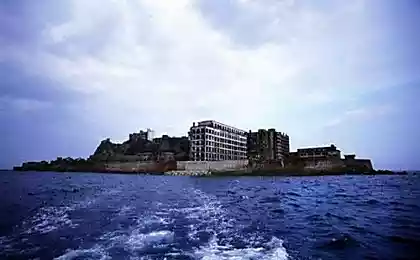420
Heat island in big cities is bad for your health
Experts at Yale University found that causes the formation of heat Islands in Metropolitan areas. These sections of the city distinguished by the significant increase in temperature compared to neighboring areas. And this is a serious threat to the residents of "heat Islands".

The authors note that the cause of the phenomenon must be sought in the impossibility for the dissipation of heat in cities. High temperature difference is due to the fact that in the daytime the different layers of air are mixed in neighborhoods with much lower speed, so the warm air mass hangs motionless above the surface.
If the climate has high humidity, the situation is aggravated even more the convection is further reduced by 58%. Scientists believe that the reason is smooth and heat-absorbing surfaces of urban buildings.
The authorities of large cities recognize the problem. One of the solutions is the use of light - and heat-reflective materials on facades of buildings. If the structure was built of conventional materials, in this case, use a special paint, which is applied to the facades of the buildings using a common compressor for painting. Thus albedo varies in a big way.
Study author lei Zhao explains that in rural areas this problem is absent due to the fact that the building is surrounded by vegetation with a more rough surface. Its texture contributes to the emergence of turbulence, which not allows heat to linger on the surface. It rushes up into the atmosphere, which is not happening in cities.
The smooth surface of the walls of the buildings and roads reduces the percentage of the intensity of convection, whereby the warm air remains in these areas.
A small amount of vegetable plantations in the city reduces the possibility of evaporation, which in turn reduces the cooling effect. And the roads and buildings during the day they accumulate heat, which then themselves begin to give. Especially this effect is noticeable in cities with traditionally humid climate.
Source: zeleneet.com

The authors note that the cause of the phenomenon must be sought in the impossibility for the dissipation of heat in cities. High temperature difference is due to the fact that in the daytime the different layers of air are mixed in neighborhoods with much lower speed, so the warm air mass hangs motionless above the surface.
If the climate has high humidity, the situation is aggravated even more the convection is further reduced by 58%. Scientists believe that the reason is smooth and heat-absorbing surfaces of urban buildings.
The authorities of large cities recognize the problem. One of the solutions is the use of light - and heat-reflective materials on facades of buildings. If the structure was built of conventional materials, in this case, use a special paint, which is applied to the facades of the buildings using a common compressor for painting. Thus albedo varies in a big way.
Study author lei Zhao explains that in rural areas this problem is absent due to the fact that the building is surrounded by vegetation with a more rough surface. Its texture contributes to the emergence of turbulence, which not allows heat to linger on the surface. It rushes up into the atmosphere, which is not happening in cities.
The smooth surface of the walls of the buildings and roads reduces the percentage of the intensity of convection, whereby the warm air remains in these areas.
A small amount of vegetable plantations in the city reduces the possibility of evaporation, which in turn reduces the cooling effect. And the roads and buildings during the day they accumulate heat, which then themselves begin to give. Especially this effect is noticeable in cities with traditionally humid climate.
Source: zeleneet.com
LED street lighting will be installed in Warrington
Best Pictures of the First Half of 2014 by Twisted Sifter Magazine























